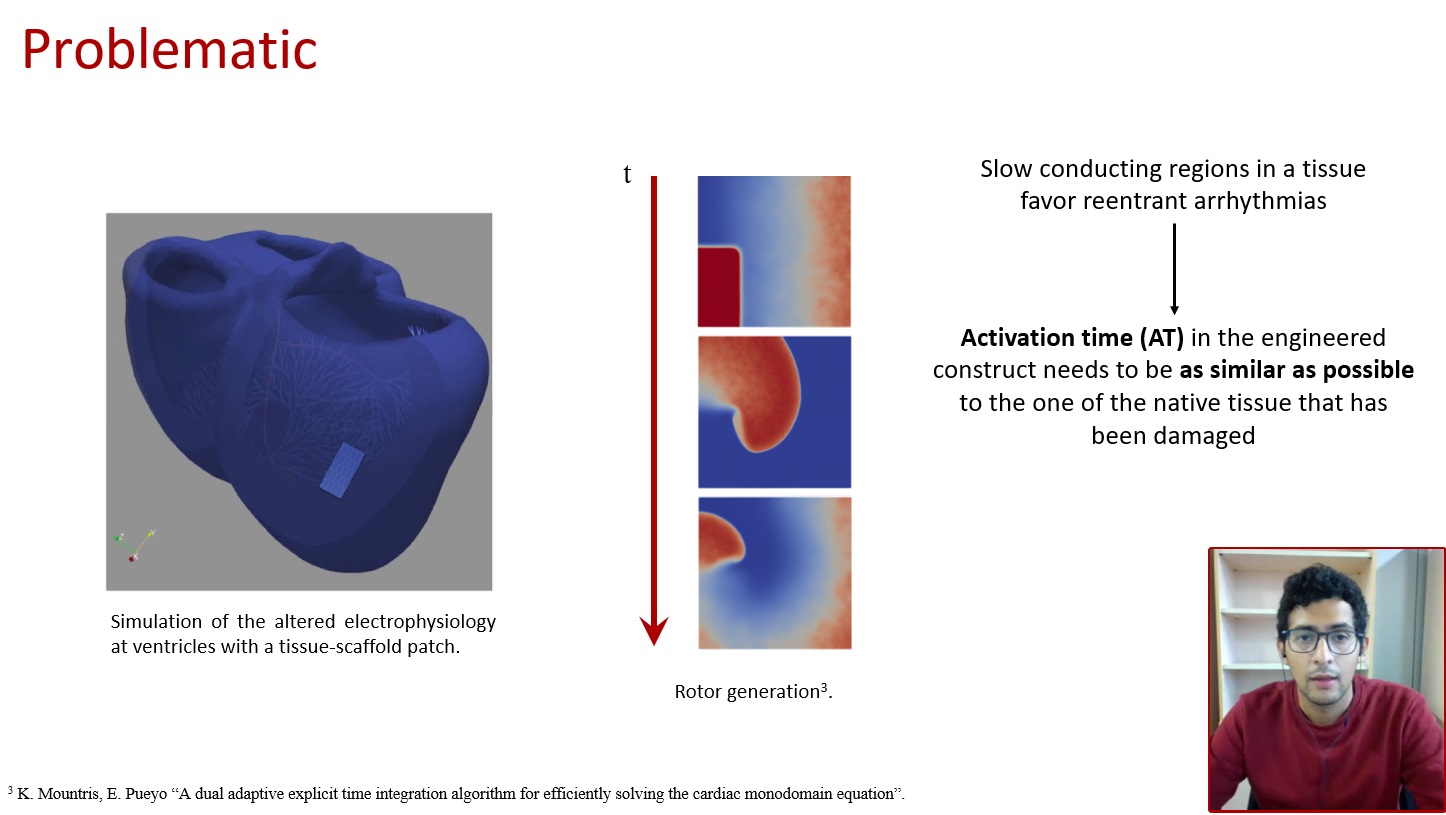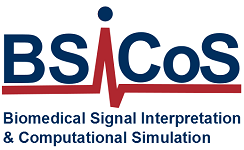18 Nov, 2021

Maxi Rosales: In silico Electrophysiological Evaluation of Scaffold Geometries for Cardiac Tissue Engineering
Human induced pluripotent stem cell-derived cardiomyocytes (hiPSC-CMs) cultured on bio-printed scaffolds have shown promising results for cardiac function restoration. Nevertheless, pro-arrhythmicity favoured by reduced conduction velocity of the transplanted constructs has been poorly assessed. Here, they investigate the impact of the scaffold geometry on the electrical activation properties of hiPSC-CMs cultures.
Electrophysiological models of hiPSC-CMs and the Finite Element Method were employed for computational simulation of hiPSC-CMs cultures. These models were calibrated to replicate experimentally measured activation time maps by adjusting parameters representative of fiber alignment and cell-to-cell coupling. Scaffolds with rectangular, auxetic and elongated hexagonal pore shapes were studied to determine the most biomimetic structure in terms of electrical propagation.
The results showed that elongated hexagons led to faster activation of hiPSC-CMs cultures by facilitating the alignment of cardiac fibers parallel to the depolarization wavefront.

Elisa Garrido: Human cardiac models for investigation of age-related cardiotoxic effects of drug compounds
The CiPA initiative from FDA has promoted the use of human models into the safety assessment workflow for early prediction of drug-induced cardiotoxicity. Yet, the effect of age, a primary risk factor for cardiac arrhythmias, is not regarded in these tools. The goal of this study is to create human in vitro and in silico models that contribute to predict drug cardiotoxic effects as a function of age. In vitro, an inducible progerin expression system has been knocked-in into human induced pluripotent stem cells (hiPSCs) so that its derived matured cardiomyocytes can be induced to age.
In silico, experimentally-calibrated populations of adult and old human ventricular electrophysiological models have been generated by using the results of age-related transcriptomic data analysis. The potential for prediction of drug-induced cardiotoxic effects by combining the proposed in vitro and in silico models is presented.

Pablo Armañac: SleepyHeart Project: Towards the Screening of Sleep Apnea Pediatric Patients and their Cardiovascular Risks
Pediatric sleep apnea-hypopnea syndrome (SAHS) is associated with major cardiovascular illnesses. A successful development of the project will lead to a new tool for the diagnosis and screening of pediatric SAHS. This tool will have the ability to detect the children most severely affected by SAHS, but it also aims to identify those children at risk of suffering from cardiovascular issues (CVR) associated with SAHS.
The screening tool is based on the overnight heart rate variability, and there is behind a strategy for industrial property protection to develop a clinical web application. While it is true that defining CVR indices can be straightforward −in fact, many CVR indices exist such as the metabolic syndrome or the Framingham index− this is not the case for the specific pediatric population.
Here, they present an approach, using standard clinical variables and corresponding estimative parameters for the definition of the CVR in children.

Esther Pueyo: Characterization of the influence of physical activity on age-related cardiac function


